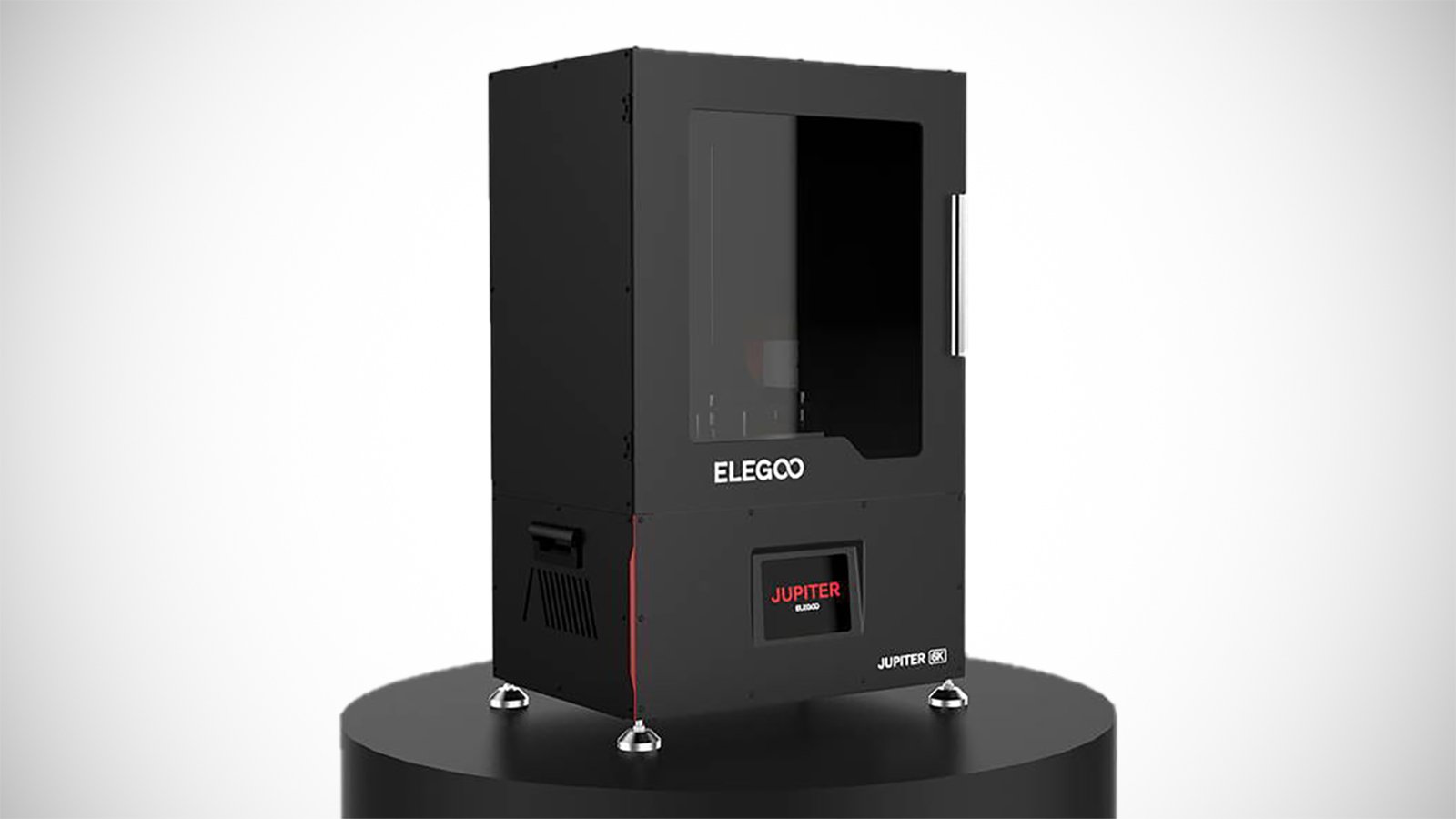The Elegoo Jupiter 3D printer is about to make some giant waves
Literally, you could print giant waves

Great news for 3D printing enthusiasts: Elegoo has announced a new jumbo-sized product will be coming to Kickstarter on September 11 at 2PM UTC.
The Elegoo Jupiter will be the biggest resin 3D printer that the company has released so far, dwarfing other popular resin printers within the Elegoo family such as the Elegoo Mars 2 Pro and the Elegoo Saturn.
What's fascinating is that the Jupiter design appears to be modular. This means that some assembly will be required, but from the gifs provided by Elegoo, it seems that the machine is split into two main parts: the lower section containing the 6K screen and complex innards of the printer, and the upper housing itself that's designed with separate modules that include the resin tank and Z-Axis kit.
- Check out our guide for the best 3D printers
- 'Stupid mistake' caused 3D printers to take on a life of their own
- This is the best 3D modeling software of 2021
Something "HUGE" is happening...😉Next stop: Jupiter!🚀#3DPrinting #Elegoo #ElegooJupiter #makers pic.twitter.com/eRjZrrR97OAugust 6, 2020
This is a big deal
While standard resin printers like the Elegoo Mars 2 Pro typically have a build area of 130 x 80 x 160mm (and larger products like the Saturn offer a more generous 192 x 120 x 200mm), the Jupiter will feature a massive 277 x 156 x 300mm build area. This is within the same territory as the Phrozen Transform or the Phenom by Peopoly, and while both have an additional 100mm of additional height to play with, Elegoo has stated that an expansion kit will be made available for the Jupiter that will extend the z-axis to 500mm.
A huge advantage it also has over its competition is price. While the shelf price will be around $1300 (which is still considerably cheaper than either of the aforementioned printers), there's a bunch of early bird offers planned for the Kickstarter launch that can take that price down to $600 (around £440 / AU$830), which is obscenely affordable by comparison for a resin printer of this size.
Some quick details we have for the Elegoo Jupiter 3D printer are as follows:
- 12.8-inch 6K LCD screen: The high pixel density has been designed to create high-resolution models, while the large size of the masking LCD gives users the ability to print large models, multiple small models, or anything in between.
- Automatic resin feeding: Something we're genuinely excited about, the automatic resin tank feeding inlet provides a resin backup whenever needed during the length of your print, so you don't have to worry about running out of resin mid print.
- Built-in mini air purifier: It won't completely eradicate that chemically resin smell, but the activated carbon air purifier can absorb and filter the irritant resin odor before they are ventilated out into the room.
Analysis: Is this the future of 3D printing?

This isn't a surprising move for Elegoo given that giant printers have been requested by the printing community for some time. You can print almost everything on a standard or midsized printer by splitting a large object into sections, but this requires a longer print time if several runs are needed, and then you need to put the parts together.
With the Jupiter, these much larger objects like cosplay props, giant tabletop 'miniatures' and figurines can be printed in one run, potentially as a singular object to preserve detail that could get lost when splitting the files into pieces.
Sign up to the TechRadar Pro newsletter to get all the top news, opinion, features and guidance your business needs to succeed!
It's unlikely that these giant-sized printers will become popular outside of larger production operations, simply because the everyday enthusiast might not have the space to set them up. For those who can though, that additional build space and high resolution will be a blessing.
Jess is a former TechRadar Computing writer, where she covered all aspects of Mac and PC hardware, including PC gaming and peripherals. She has been interviewed as an industry expert for the BBC, and while her educational background was in prosthetics and model-making, her true love is in tech and she has built numerous desktop computers over the last 10 years for gaming and content creation. Jess is now a journalist at The Verge.
